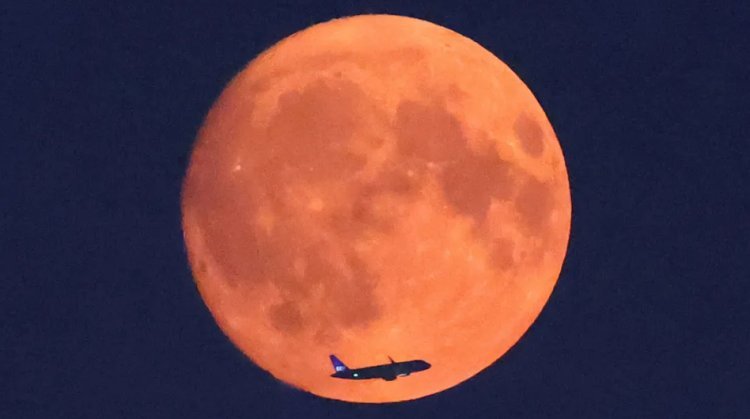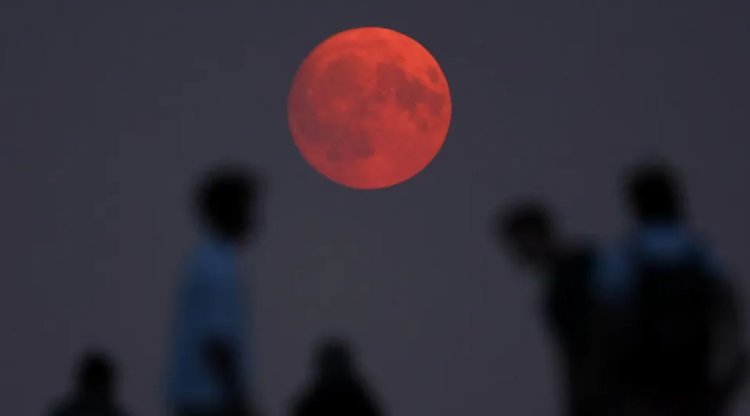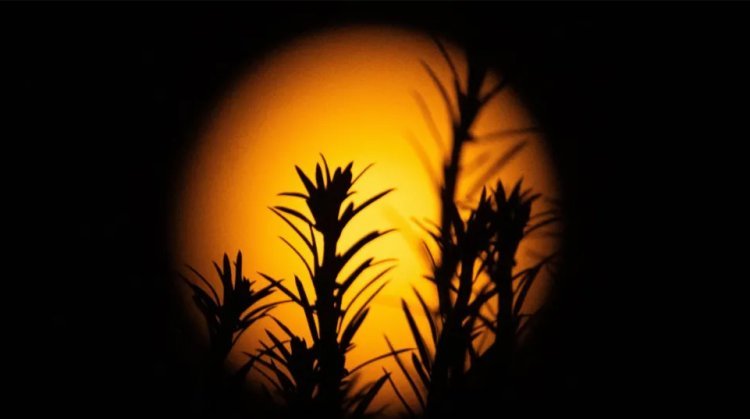Blue moon august 19, supermoon shines red
Blue moon august 19, Monday's full supermoon — which was also a blue moon — turned dramatically red on Sunday night.

This glowing sphere has been spotted across Britain, but there's still a chance to catch a glimpse of it in the coming days.
It was also seen rising in Northumberland on Sunday evening.

Orange and red colors may appear in the sky over Britain
Not blue - Red - Full supermoon
Despite being called a Blue Moon, the Moon is not actually blue.
But, on Sunday night it turned red as smoke from North American wildfires sat in the atmosphere above the UK.
Smoke particles scatter light as it passes through the atmosphere, making colours in the spectrum – particularly orange and red – more visible than usual.
Smoke also meant that the sky was hazy over the weekend and orange on Sunday night with a spectacular sunset.
Smoke will begin to clear on Monday as clouds and rain arrive from the west.
Why is it a blue moon?
Since the lunar cycle is 29.5 days, it eventually doesn't match our calendar, where there's normally a full moon every month.
A blue moon is most commonly defined as when we get an extra, 13th full moon in a year.
So the second full moon in a month becomes a blue moon.
However this blue moon comes from an alternate, more traditional definition of when the lunar cycle results in not three but four full moons in any given season.
So where there are usually three full moons in each season. If there are four full moons, the third full moon is designated a blue moon.
Since blue moons are not that common, this is thought to be where the phrase "once upon a blue moon" comes from.

Red - not blue - blue supermoon captured in a way that looks like it's sitting on a picnic bench in Derbyshire

When the sky was clear, people gathered to see this sight
This full moon is also a "supermoon."
A supermoon occurs when the full moon occurs when the moon is at its closest point to Earth in its orbit — perigee.
It can appear brighter and larger in the night sky.
This is the first of four supermoons this year.
The full moons in September, October — the closest moons this year — and November will also be supermoons.

This map shows where clouds might prevent you from seeing this spectacle on Monday night
Can I see the blue supermoon tonight?
The full blue supermoon will be 100% full at 19:25 BST on Monday evening, but many of us won't actually be able to see it.
The moon will rise in the eastern sky at around 20:50 BST and then set in the western sky at around 06:35 on Tuesday morning.
The weather forecast isn't looking so favourable, though, with cloudy skies and scattered rain expected across the UK.
There could be some limited periods of clear skies at different times of the night.
Although the blue supermoon on Tuesday night won't technically be full, it will still be almost full and skies will be more likely to be clear.

BBC Weather watchers took different approaches to capture this one-of-a-kind orange supermoon in Selsey, West Sussex
News sources(bbc.com)













